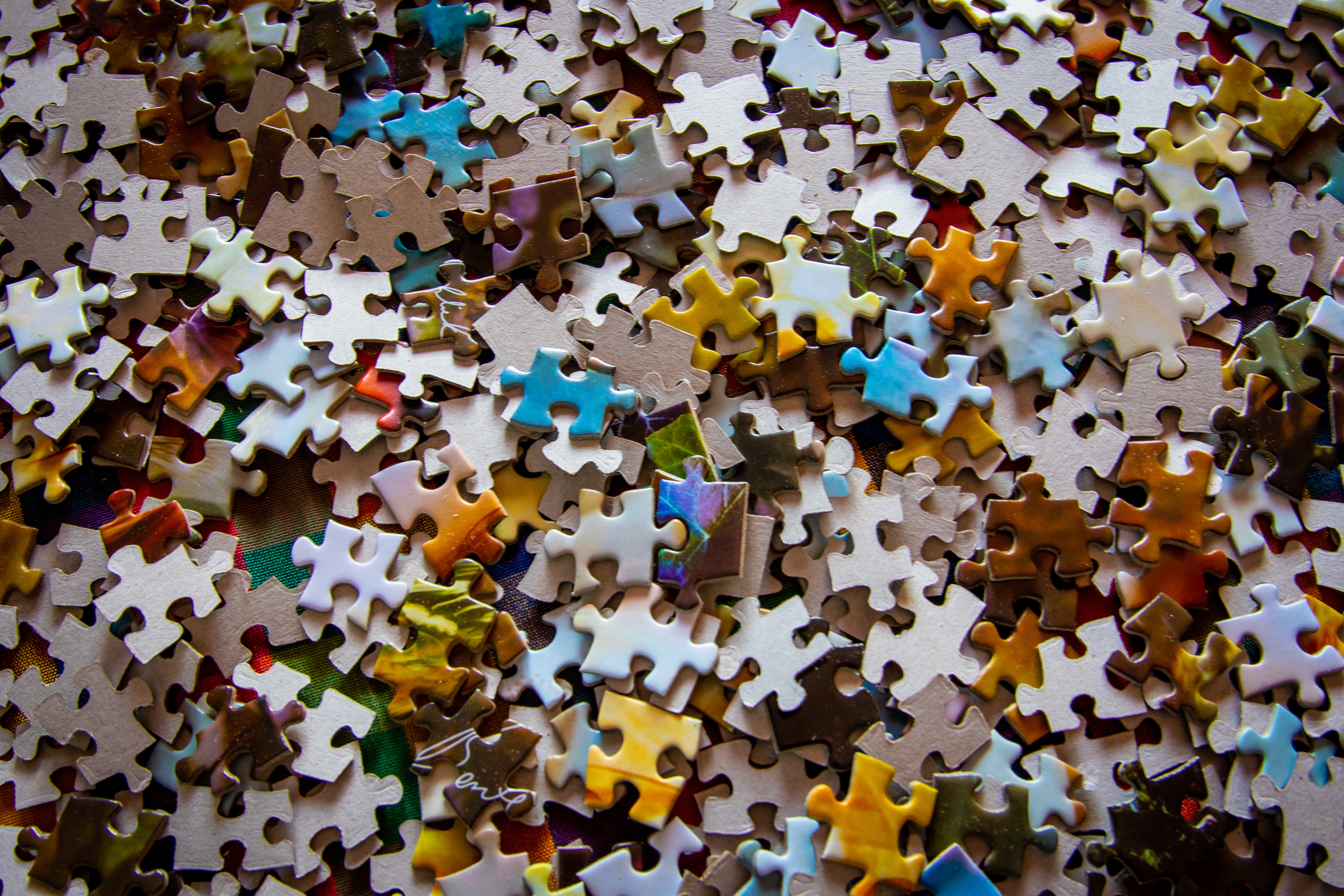I like puzzles.
I always have.
There’s something therapeutic about the monotonous task of matching up small bits of cardboard to create a Van Gogh masterpiece, the Manhattan skyline or a hundred bottles of coke on the wall.
Instead of “take one down, pass it around” like the annoying little jingle goes, you can put one up. Piece by cardboard piece and pass around a real cane-sugar Dublin Dr. Pepper while you do it.
Ahhh, that’s satisfying.
Isn’t it?
Puzzling, you see, has the semblance of difficulty yet with inherent reassurance.
Take, for example, those edge pieces with their four guaranteed corners. Tedious to find. Tiresome to separate. But they provide a built-in starting place and a catalyst for achievement.
When put together, in fact, the straight edges form a fixed border, an immovable perimeter. None shall pass beyond this point. Ahhh, that’s heartening too.
Now consider the box top.
The epitome of hope on the table before you. Always in view, always within grasp is the picture of the final product. The happy ending. It’s what all these seemingly colorful pieces of chaos will eventually become.
Therefore, no matter how long or how daunting the task, the puzzler can rest assured. The effort will be worth it. A Thomas Kincade replica or other such chef-d’oeuvre is in there somewhere.
Dal segno al fine!
We keep puzzling, you see, because it mimics the way we approach life.
Looking for patterns, searching for meaning. We are all desperately trying to make relevant connections between the mundane and fragmentary moments of our everyday.
At times we develop elaborate strategies in attempt to puzzle our way to a bigger picture. At times we rely on good, old-fashioned trial and error to make some sense from our circumstances. But either way, deep down we cling to the belief that a whole exists. A world where fragments come together, broken parts are made complete, and all the little contorted pieces of life really do belong.
A world where puzzling can ultimately cease.
Because real-life puzzling, quite frankly, is hard. Our lives are messy. Our days are disjointed. Just reading the news can make it nearly impossible to envision the bigger picture of eternity where God wipes away every tear and we triumphantly proclaim, “Where, O death, is your victory? Where, O death, is your sting?” (Rev. 21:4; 1 Cor. 15:55 NIV).
It’s like looking at a washed-out Polaroid.
Honestly, we just need a different kind of box top. We need one we can grab onto. One we can sink our teeth into. One we can move, twist, turn. One we can dissect and scrutinize. One we can come back to over and over and over again as we try to make sense of things.
We need a box top for today.
For our days.
For the here and now. For the already in the midst of so much more than the heavenly yet to be.
Good thing the great Puzzle Maker knows this. Good thing nothing ever puzzles Him.
From before the creation of humankind, before the formation of the world, God made ready a different kind of box top. A three-dimensional box top. A living, breathing box top that we could concretely visualize and tangibly know.
Jesus.
He is our box top. He is our hope.
He can be “the way and the truth and the life” for our fragmented, puzzling world if we let Him be (John 14:6).
Jesus, you see, came to this earth as the “radiance of God’s glory and the exact representation” of the Father (Hebrews 1:3). The Puzzle Maker Himself in human form. God knew the only way for us to find purpose and meaning in the jigsaw entanglements of this life would be if He came, the Great Architect, and made Himself available at every turn in the game.
Abba Father understood something we so easily forget.
We aren’t on the outside looking in as we put this puzzle called “life” together. We are part of it. An interlocking piece ourselves. That’s why puzzling is so difficult. Our ability to make sense of things, at least in this life, is bound by our narrow scope, our limited vantage point. We can only see the pieces immediately around us. We cannot see the whole.
So Jesus came.
To be both a piece and the whole. A piece in the whole.
The whole in our piece.
All so that we might have peace ourselves. Peace that “transcends all understanding” (Philippians 4:7). Peace that overcomes the hardships of this world (John 16:33). Peace that consumes our daily lives, our interactions with others, our sink full of dirty dishes.
When we look to Jesus, when we remember His humanity, we can find someone just like us. We see a man who struggled. A man who went hungry. A man who faced temptation, frustration, rejection, misunderstanding, pain.
All the same jagged limitations we do.
Yet in this same man, we can see that something more exists. Something supernaturally intact and whole. Jesus’ divinity shines through His humanity. His words, His actions, His very soul essence of unconditional, self-sacrificial love puts eternity on display and makes believable a glorious heavenly home where extravagant grace levels the scales of justice and where spiritual clarity reigns supreme (Acts 17:31, 1 Corinthians 13:12).
In this way, Jesus provides a framework more fixed than any straight-edged cardboard border could ever be.
He supplies the inherent reassurance every puzzler needs as they “press on to take hold of that for which Christ Jesus took hold of me” (Philippians 3:12).
At least that’s how it is for this jigsaw junkie.
He’s become my box top.
Maybe Jesus can be your box top too.







Great analogy! Many times that box top is the only thing that keeps me from giving up when putting together a puzzle. The same is true in life. That hope of heaven, of God one day making all things new, is sometimes what keeps me going.
Thank you, Ginger! Love you.